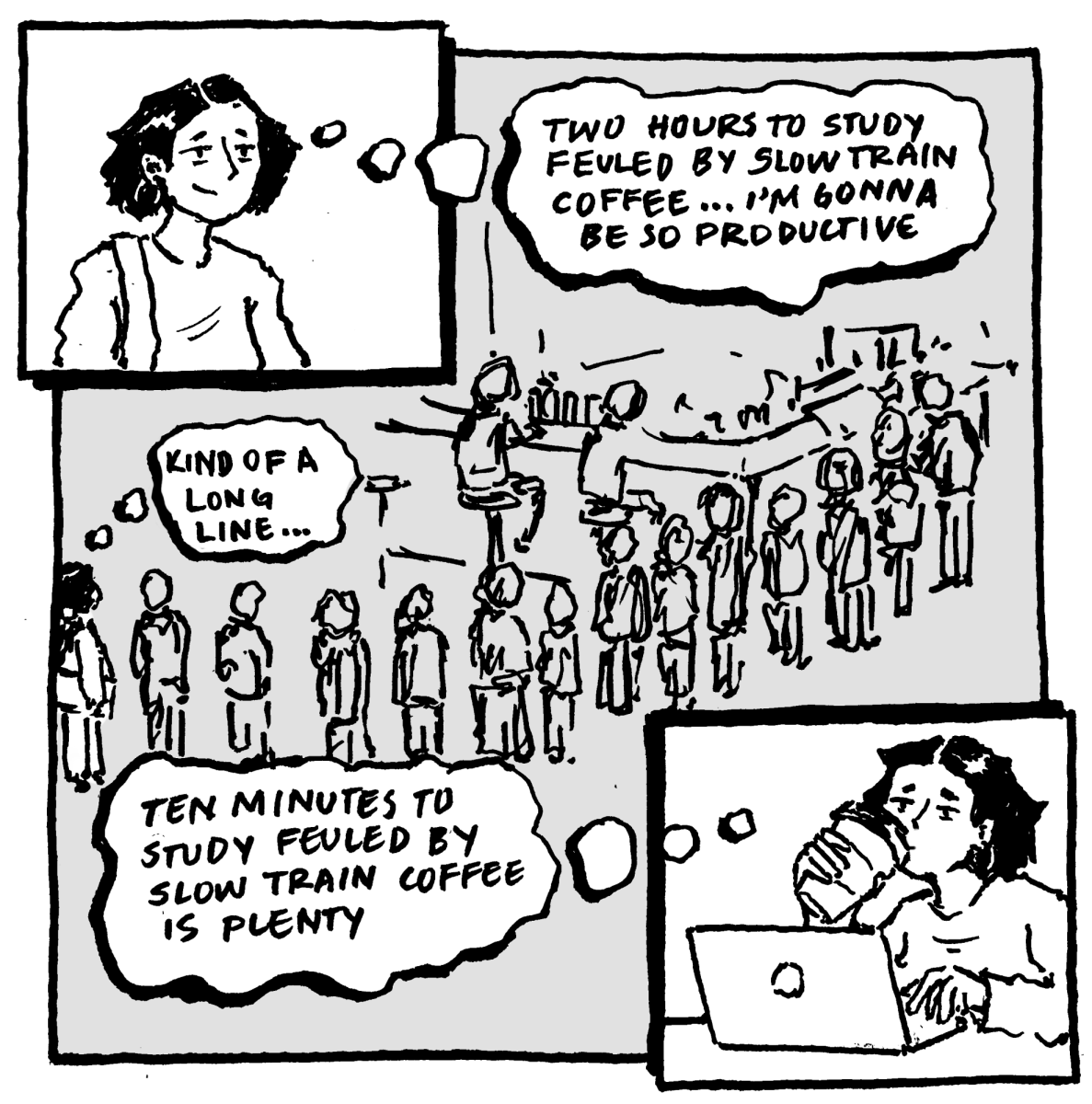If you’ve been on any short video based platform within the past couple of months — whether that is the original TikTok or one of its arguably lesser offshoots, such as Instagram Reels or YouTube Shorts — you are sure to have been privy to the plethora of gendered social media trends that have swept through online spaces. “Girl dinner” highlights women’s tendency to eat strangely cobbled-together, charcuterie-esque meals. The first “girl dinner” stemmed from a TikTok responding to someone showing off their “peasant meal.” This dinner was composed of two slices of bread, two slices of cheese, four grapes from a bag nearby, butter, a glass of wine, and a jar of cornichons. “Girl math” has been described as an “internal system of feminine logic.” Examples include spending more money online shopping to get free shipping — which supposedly saves you money — or pricing items of clothing by the number of wears you get out of it — a $50 coat drops to $1 if you wear it 50 times.
The online generation, typically younger and more socially aware, is often touted for its rejection of oppressive, overtly gendered systems within the real world. Young people consistently reject ideas of toxic masculinity and critique the inordinate amount of labor put on women in and outside of the home. The same generation that fights for these values has proliferated these trends, a reality that could seem antithetical. However, some experts have argued the opposite.
Emily Contois, associate professor of Media Studies at The University of Tulsa, author of Diners, Dudes & Diets: How Gender & Power Collide in Food Media & Culture argues that women are often pushed to “eat in a restrained way, to make sure [their meals are] nutritionally balanced, to always be thinking about thinness. That’s where you can see the idea of feminist empowerment in girl dinner.”
In reference to “girl math,” Mary Louise Adams, a sociology expert and associate professor of Kinesiology and Health Studies at Queen’s University in Kingston, Ontario, has said, “The desire for identity is not just about the ‘math,’ of course, but maybe about resisting a bigger cultural belittling of women’s consumption habits, and persistent assumptions that women can’t be as good as men at math and other technical things. It could be women thumbing their noses at people who try to devalue them.”
Based on these evaluations, these trends could be read through a lens that points towards female liberation rather than playing into gendered roles that seek to divide and oppress. Experimenting with these gendered structures in a low-stakes way could be a method to remove the debilitating power from them.
This is not to say that everyone hopping on these trends is seeking to undermine the patriarchy, nor that these trends do this on their own. Instead, there is an argument to be made about the ways in which this generation wants to explore the less serious, less depressing modes that gender expression can take. At their core, these trends are fun, silly ways to get involved with social media, to show off your particular lifestyle in a ready-made video format. Even if there is no explicit intention embedded in every video of a messed-up charcuterie, there is a light-heartedness embedded in a dichotomy that has historically caused harm.
Still, these trends don’t exist within a vacuum, but rather in a world where oppressive gendered structures continue to proliferate. “Girl dinner,” though initially a funny way to present a cobbled-together feast, has been accused of promoting the idea that women don’t eat much or, in the case of one girl’s video who eats “sleep” for dinner, anything at all. The opposite of the “girl dinner” — “boy dinner” or “man dinner” — shifts the meaning of the initial trend. Rather than small portions of a variety of items, ‘man dinners’ are composed of gargantuan portions of a single item — steaks skewered on forks, leftover pizzas found beneath comforters, huge slabs of meat. The lines drawn in this particular trend seem clear and point to a restrictive presentation of women’s diet rather than a liberating one.
“Boy math,” the opposite of “girl math,” follows a similar arc. Girl math, argues disability rights influencer Imani Barbarin, “is essentially the recognition that time, convenience, and money are interchangeable currencies.” Examples of boy math refer to men’s height insecurity — “boy math is 5’10” being 6’” — or older men marrying younger women — a 51-year-old comedian’s video about his 24-year-old wife was flooded with comments referencing boy math. “Boy math,” like “boy dinner,” demonstrates a response that is significantly more keyed into negatively gendered divisions.
These two reactions to the trends, labeling them as either problematic or liberating, continue to play into a black-and-white rhetoric that is so often peddled online. To subscribe to either one of these beliefs completely is to ignore the nuance and intricacies that exist within gender presentation, performance, and the way these ideas play out in the real world and online. It is true that these gendered constructs cannot be separated from their oppressive structures. These trends do not exist in a vacuum and it is ineffective to pretend that they do. But this does not mean these trends cannot continue to be fun and silly. Current discourse would like us to diagnose problems with a single definition. But to interact with serious issues online, gender included, there needs to be a common consensus that every issue we interact with contains multitudes. Through a certain lens these trends can be liberating, through another reinforcing oppressive stereotypes, and through another just silly internet fun. As we interact with complex issues, we must take every narrative with a grain of salt and remember to think critically about the issues we engage with no matter how trivial they may seem. We must hold space in our heads for the complexities of issues that exist without a single solution or a single definition.








